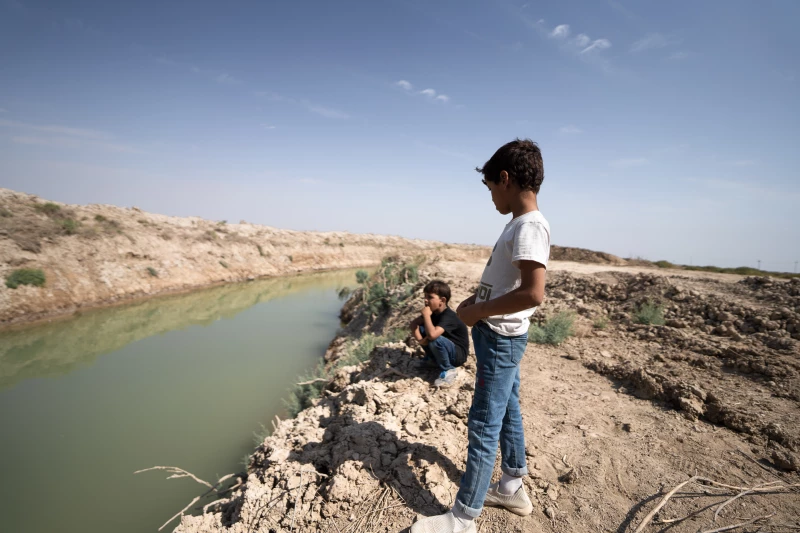The New Region, THI QAR - Maha*, now 29 years old, has been battling addiction for over five years, since her return from Australia, where she resided and held Australian citizenship. However, upon encountering challenging circumstances in Iraq, she was prompted to explore alternative paths to navigate her predicament.
This is Maha's narrative, as she describes it, the circumstances enveloping her resembled a nightmare.
Her experience and engagements in the host country, where she resided with her family, stood in stark contrast to those in Iraq. The societal dynamics, governmental interactions, and educational institutions presented entirely different landscapes.
Upon her acceptance into university and initial encounters with friends during her studies' early stages, she soon realized that some of them were involved in drug use.
Enticed by the notion of their calming effects on the body, she began experimenting with drugs. This marked the onset of her descent into drug use and addiction.
Her inaugural encounter was with a sedative pill known as Captagon, which induced a distinct sensation and offered her a sense of psychological and emotional solace, providing an escape from the pressures she believed were driving her reactions.
However, her situation deteriorated as she escalated from consuming three pills weekly to one pill daily, and sometimes more. She discovered that this particular drug failed to meet her expectations.
Maha did not just stick to Captagon; she progressed to using crystal methamphetamine. These substances played a significant role in her academic setbacks; she struggled to excel in her studies. Successive semesters saw her achievements come primarily from the second attempts, rather than the initial rounds.
Samaa Mohammed*, a fellow student, shared her experience with Maha and how she became certain of her drug use. On one occasion, she spotted Maha exiting one of the college gates carrying a sum of money.
Upon her swift return, Samaa noticed a small bag containing a white substance in one of Maha's hands. Hastily, Maha attempted to conceal it in her bag. "I caught her off guard with a smile, 'These are drugs, aren't they, Maha?'"
Maha was taken aback, and then she sat with me for an extended period, tearfully explaining the reasons behind her addiction and the challenges of quitting.
Samaa elaborates that she persisted in urging Maha to abandon these harmful substances, warning her of the impending ruin they were causing in her life, including the impact on her studies.
It took Maha a considerable amount of time to take action, but eventually, she succeeded in quitting. Upon graduating from college, she made the decision to close this chapter for good, realizing she was on a downward spiral.
Consequently, she sought help from a health center in Baghdad instead of Nasiriyah, where she successfully put an end to this chapter of her life.
In Thi Qar, a province characterized by its tribal social structure and adherence to customs and traditions, drug abuse is taking a severe toll on the youth, including girls, under various guises.
Despite its traditional setting and quasi-governing role, the region is not immune to the scourge of addiction. Addicts are actively propagating this epidemic, deluding themselves into believing they are on the right path.
Dr. Ibrahim al-Sayegh, Assistant Director of the Rehabilitation Center, which specializes in treating addiction, informed The New Region that the center has successfully treated over 2500 drug users, spanning various types of drugs, in just two years.
This averages out to about 3 addicts per day, encompassing individuals of different age groups.
Sayegh further notes that addicted youth, ranging from 12 to 25 years old, have undergone treatment through either inpatient care or a comprehensive therapeutic program.
He highlights a concerning case where a seven-year-old child, addicted to inhalants known as “the Pilot," was admitted for treatment.
This youngster, residing in a rural area, has been inhaling gasoline fumes.
According to his father, the child habitually sniffs the substance from the fuel tank of their vehicle. Upon discovery, the father attempted to intervene, but the child's stubbornness prevailed, prompting him to facilitate the inhalation process by providing gasoline. Presently, the child is undergoing treatment.
Regarding addicted girls, Sayegh clarifies that the center has not documented any cases of girls using drugs and seeking treatment. However, some approach private clinics due to familial and social constraints hindering their access to formal treatment.
The catalyst for their drug use often stems from familial breakdowns. Some students resort to drugs to enhance concentration during exams and prolong wakefulness.
Yet, these substances induce addiction from the first dosage. While some students initially use them during exams and cease afterward, many struggle to resist and relapse during their college studies.
Sayegh recounts an incident involving a sixth-grade student attending remedial classes. Some girls were observed accompanying their classmates and advocating drugs as advantageous, claiming they enhanced concentration and kept one alert during studies without fatigue. Initially, some students experimented out of curiosity, but they soon became addicted.
The rehabilitation center boasts 16 beds and employs almost 12 nursing staff along with two psychologists.
However, they face a shortage of a social researcher, as it's not part of the health job description. Consequently, they depend on enhancing their staff's skills to fulfill the same function.
Crime geography specialist Dr. Ali al-Atabi informed The New Region that addiction has escalated to even more perilous levels, with numerous instances of minors excessively reliant on drugs, particularly Captagon pills and crystal methamphetamine.
These substances are deemed the most mentally and psychologically influential, with a swift bodily reaction, facilitating rapid dissemination.
Moreover, women have become ensnared in this crisis, with hundreds of cases of drug use and trafficking among women documented across various provinces, particularly in major urban hubs.
Atabi observes that the drug distribution landscape in Iraq illustrates that "over 80% of users opt for stimulants like crystal methamphetamine and Captagon due to their rapid effects, despite their higher cost compared to other substances. These drugs induce quick euphoria, feelings of comfort, relaxation, and the capacity to engage in strenuous activities without hunger, thirst, or the need for sleep. Initially, users maintain a high level of focus before experiencing bodily weakness and deterioration after months of usage. As the effects diminish, users increase their dosage, culminating in complete collapse or what is commonly termed a 'shutdown'."
Atabi unveiled official statistics sourced from the Ministry of Interior and disclosed in a scientific study that the tally of women implicated in drug-related transgressions in 2021 amounted to 151 individuals, encompassing 22 underage girls nationwide.
In Thi Qar, their count stood at 5 women, with the underlying cause being "the financial enticements extended to women on one side and the coercion exerted on them by the purveyors of these vices ensnared in addiction."
Under the Drugs and Psychotropic Substances Law No. 50 of 2017, individuals seeking to overcome addiction voluntarily are shielded from criminal prosecution. Article 40 stipulates that "no legal action shall be taken against individuals using drugs or psychotropic substances who voluntarily seek treatment at specialized addiction treatment hospitals." Article 41 mandates the confidentiality of individuals undergoing treatment for drug or psychotropic substance addiction.
A security insider in Thi Qar disclosed that the count of women incarcerated in Nasiriyah prison for minor drug-related offenses has soared to 198, with sentences spanning from 3 to 10 years.
In 2023, authorities confiscated over 53,000 drug tablets, more than half a ton of crystal meth, and 1000 grams of heroin.
In a recent statement, former Interior Minister Othman al-Ghanimi disclosed that over 50 percent of Iraq's addicts are young people, representing an alarming proportion.
*Names have been changed to protect their identity



 Facebook
Facebook
 LinkedIn
LinkedIn
 Telegram
Telegram
 X
X


